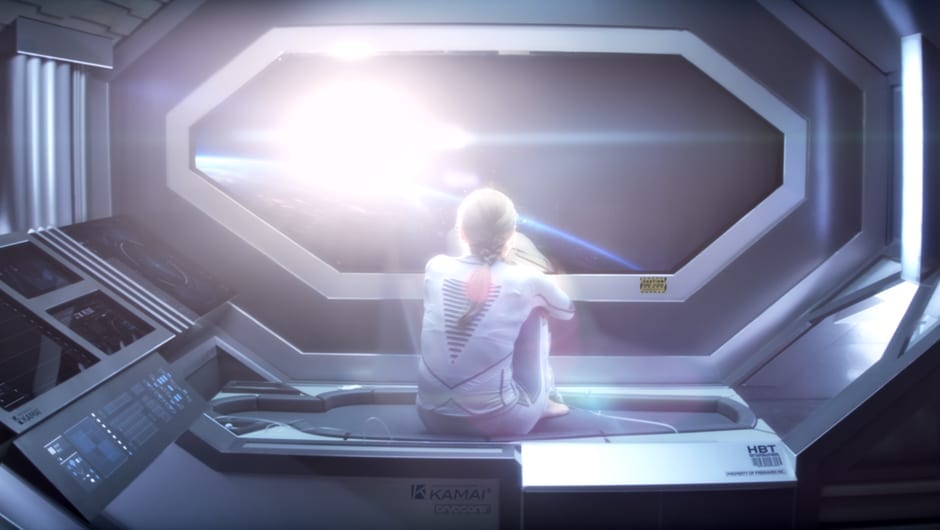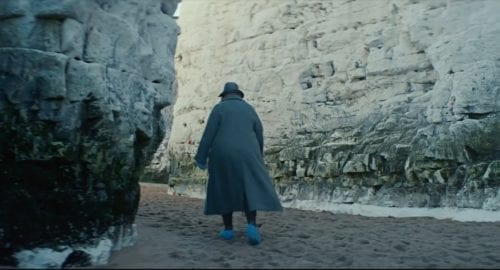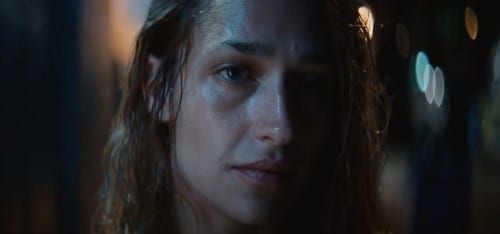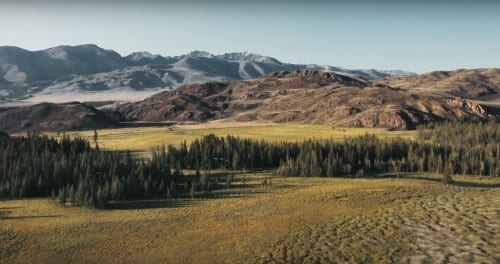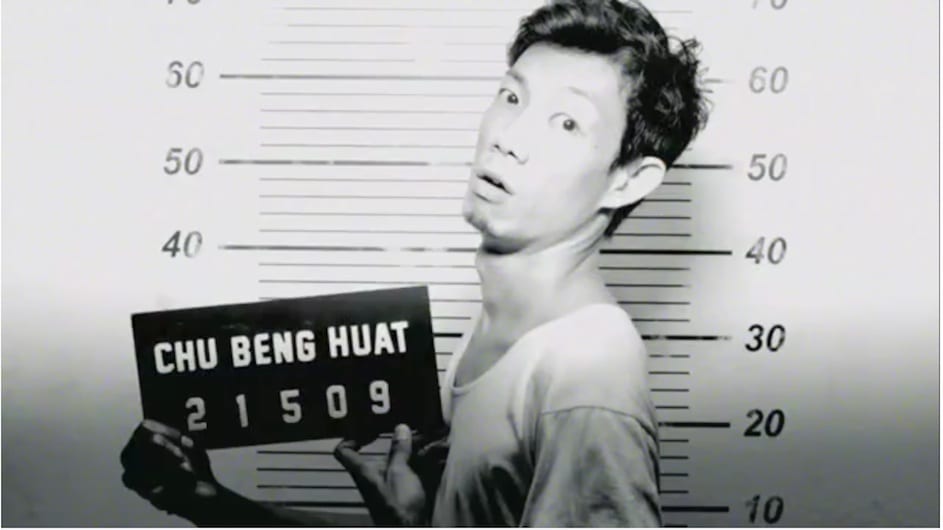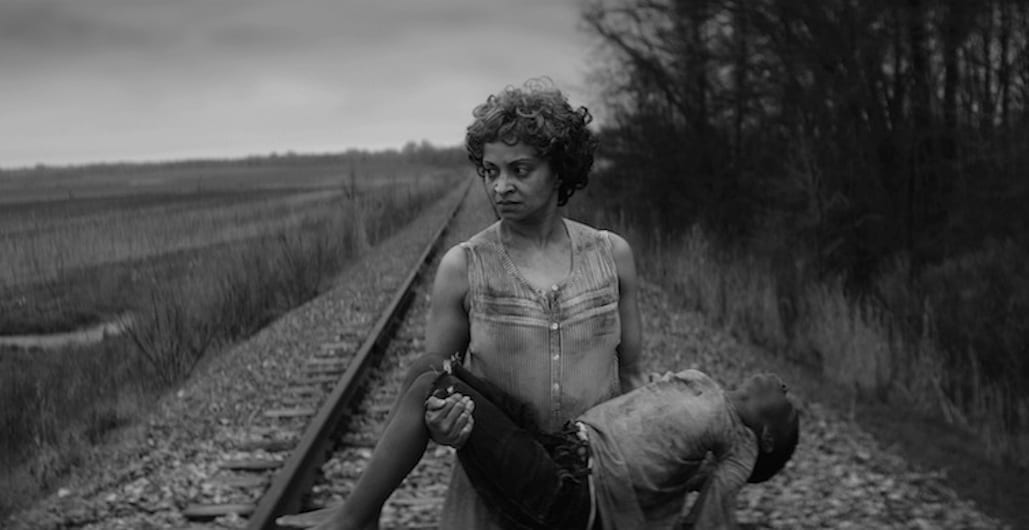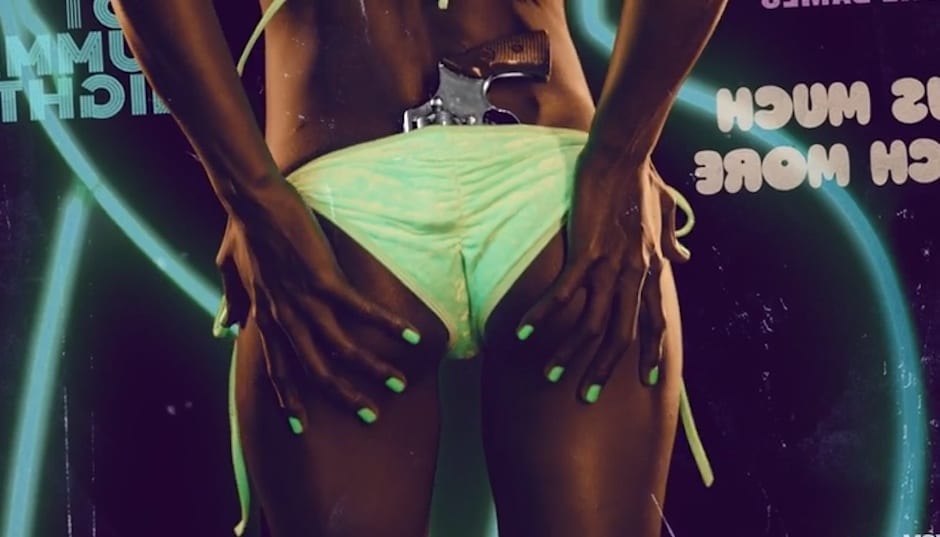The Leap, which you wrote, directed and edited yourself, is a hugely ambitious independent sci-fi film that you have pulled off magnificently… and you’ve just hit 31.
Thank you. I always felt more like I’m already 31 and I should have probably done this 5 years ago but later is better than never.
Can you give us a brief history of what you were up to before you began The Leap please, and tell us how the project came about?
I came to London from Brussels in 2009 and studied at the London Film School for a few years. My graduation film, a videogame commercial, did pretty well at festivals and got me professional work directing more videogame commercials. I have also been fortunate to work a lot as an editor. My grad film taught me a lot of things but one prominent lesson that I took from it was the realization that people tend to hire you to do the exact things they’ve seen you do before. So I figured that if I wanted to also branch out towards long-form fiction filmmaking, I should probably endeavour to make something that showed that I was up to the task.
I started by distilling themes that speak to me. Combined with little events and things I noticed in life, the concrete story started to form in my mind.
Practically speaking, I had a little money, which I’d inherited from my grandfather when I was ten years old. He left a little to all the grandkids, to help buy a car to go to work or put a deposit down for a house or something, but I figured I’d invest it in my career. I knew I was only going to be able to do this once, so I decided to bet everything on it. With some additional help from the film’s producer, private investors, family, production company Great Guns and an untold amount of favours,¬ it was just about possible to get the thing finished.
What was your process for writing the narrative – it’s a complex imaginative piece, did you evolve it as a script first and then evolve it into a storyboard?
It initially just formed in my head out of a few sounds and moments and atmospheres that struck me in ways I can’t really remember. The opening scene definitely came first, which inspired me to make something about an event with ramifications decades deep. I am fascinated with the way huge societal change affects the lives of individuals. When the fury of the world clashes with people’s ambitions and values, or mere survival, it makes for interesting conflict and drama.
I wanted to write a short story about how one event, a small part of large-scale machinations, in this case interplanetary migration, completely determines two people’s lives in very different ways. There is a certain cynicism that comes with my worldview, in the sense that the film focuses on one individual trying to save his soul by doing something decent for another individual. It’s a microcosm view because that’s often the only level at which decency can prevail. And even then… Reiss is a reluctant hero, who only reaches his final decision because fate and circumstances nudge him towards it repeatedly, despite several attempts to look away and forget.
I spent a couple of months just writing on my own, until I had a decent draft, which then underwent many changes for months, as I was getting opinions from a few trusted people. Lots of debates and analysis ensued, and the final result is definitely better for it. I spent a few days with storyboard artists to get some key frames down, mainly for my collaborators. We were able to work quite quickly since I had designed the sets myself in Google Sketchup. This allowed me to render out frames in storyboard style with the correct lens and angle for each shot, upon which a storyboard artist could easily then draw the characters in movement.
What were the main challenges – any nightmare scenarios?
To be fair, everything is a challenge when you’re trying to do something on a tiny fraction of its normal cost. Because of the project’s scale, there were quite a few hurdles. I didn’t really know anyone apart from my DOP, Tony Miller, when I set out to make the film, so mission one was to find a producer. I met up with a few people and some were on board for a bit, but it’s pretty hard to find the kind of commitment you need to pull something like this off, especially when nobody’s really getting paid. A mutual friend eventually introduced me to a producer called Craig Tuohy. We are almost comically different people, who somehow clicked straightaway and found a way forward, so from then on things stepped up another gear.
Hurdle two was finding a space where we could build, light and shoot at for a good while without being in anyone’s way. A studio was obviously way too expensive so we ended up finding an unused warehouse on the docks in Dartford that belonged to a shipping company. They were very gracious and let us use it for a few months.
Thirdly, the way I saw the film, it simply had to be shot in a fully built set. We did look at existing apartments and alternatives for the spaceship but they just wouldn’t give us the same feel and originality. It was hard enough to find a production designer, let alone a company that would actually help us build the sets for the money we had. I quite enjoy designing stuff so eventually I figured I’d do the design work myself so that we could allocate all our money towards the build.
After a pretty desperate search and some disheartening meetings we met with Brian Dowling, from Helix 3D. He was interested in doing more film work and I think our project appealed to him, as it could be visually interesting from a build perspective. We owe him and his team a great debt of gratitude for seeing it all the way through, even when I kept moaning about an imperfect bath tap, or a piece of wall that needed another layer of paint…
Something that regularly seemed like a nightmare scenario, to a degree where you almost give up worrying about it, was cast availability. Good people are busy. Things come up or get rescheduled all the time, and shorts are usually not at the top of most agents’ lists, so there were a few times when that was looking pretty grim. Eventually it all came together and it was a pleasure to work with both my leads, Simon and Alix. Honestly I can’t imagine anyone else in the roles at this point.
Were you ever tempted to give up and if so what brought you back to the project?
Honestly, all through pre-production, even when faced with hurdles, that at some points seemed impossible to overcome, I remained undeterred. I had made the decision that I was going to make the thing some way or another so I just didn’t entertain the idea of failure at any point.
However, a few weeks from shooting, with everything in place, crew, gear, sets, everything, I woke up in the middle of the night in horrendous pain. I immediately knew what it was as I had it once before years earlier; a kidney stone. It was a pretty nasty one and I had surgery. Because of all the stuff I had to do pre-shoot and the stress it was a long and difficult healing process and I was in constant pain, barely being able to sleep for weeks. Basically, when your body starts sabotaging you at the hour of truth, it leads to a few moments where you get a sinking feeling and start thinking that you just can’t do it.
The idea of having to cancel everything (as moving the shoot was pretty much impossible with availabilities and a low budget) was the stuff of my nightmares. But the support of my collaborators pulled me through. I even remember Craig sitting in the doctor’s waiting room with me. Ultimately the day of the shoot arrived and, loaded up on painkillers, lacking in sleep and glued to a water bottle, I was immensely happy and raring to go.
The film is VFX driven – where does your understanding of visual effects come from? Did you work closely with VFX artists?
I enjoy imagining things and worlds and figuring out how to create them most effectively. When I was a kid I spent a lot of my time building models, only to blow them up in the garden upon completion.
I’d film this on a Hi8 video camera, play it back half speed and film it again from our TV to achieve slow motion. All the while being deeply sad that I’d missed the era of consumer film cameras, which would have allowed me to shoot real slow motion or stop motion animation frame by frame. I’d paint matte paintings on glass and shoot through them to extend sets, in which my friends would have to parade around as German soldiers, not always willingly.
Before I really had a concept of what a director does, special effects were my first love. I read every book I could, watched every special feature and dabbled around with 3D animation software when it became available during my teenage years. I guess that’s why I’ve always felt comfortable in that world, and I continue to enjoy exploring the possibilities it offers for storytelling.
Having a ton of work ahead of us with 200 VFX shots, we were lucky to cross paths with an experienced VFX artist, Bryan Jones, who took the project on and helped strike a deal with the Finland-based Troll VFX who were previously best known for their work on Iron Sky. They took on the bulk of the work, with Bryan supervising and also working on a number of shots himself. For over 8 months, we all worked closely together, clocking an untold amount of hours on Skype, designing and realizing the world. As I’d taught myself a decent amount of After Effects over the years, I also did stuff like muzzle flashes, bullet hits and some cleanup myself.
At what point did Great Guns become involved and what did they bring to the project?
I met Laura and Sheridan, the EPs at Great Guns, in May 2013, when I was in pre-production on the film, and after I had finished a CGI teaser trailer I’d made to get potential collaborators and companies interested in helping out. I immediately felt that the way they voiced their thoughts and went about their business appealed to me. We just got on really, and I remember them telling me that the film I was trying to get made showed that I ‘got off my arse and did something’.
They signed me and from that point onwards they have been a great supporter of both me and the film. In addition to lending significant creative support with the script development and editing phases, Great Guns also brought on board a top sound designer, Dominic Gibbs, who agreed to take on the film’s sound edit and mix. Not only did that result in the film’s sound being very high end but, at Dom’s suggestion, Dolby also checked out the film and decided to license it worldwide as original content to showcase their new Dolby Atmos surround technology. All in all I’ve been very lucky to have found a home at Great Guns whilst I was making the film. It always helps a great deal when people believe in you.
What part of the film making process did you enjoy the most?
Though the shoot was stressful, I find I always get into a certain state of calm and focus at moments when the pressure gets higher. I guess I kind of enjoy the process of trying to achieve the best result within a given set of circumstances. Luckily, making quick decisions and steering the ship comes fairly naturally to me so I always felt in my element during the shoot.
Also editing is a bit like playing with a box of Lego that you created yourself so that’s fun too. It’s nerve racking because you constantly question whether you’re going the right way with it and whether you can still see what’s good and what isn’t, but that’s why you ask for a lot of opinions from people whose judgment you respect. Everybody always says it’s a bad idea to edit your own film and, for the aforementioned reasons, I would agree to a degree.
On the other hand, I felt it allowed me to get so familiar with my own material that I actually stopped feeling precious about it to the point that, in the last month of the edit, I looked at the footage as if it was someone else’s film and that’s when I started enjoying trying to make the best of what I had again.
What are you planning to work on now?
I’m looking forward to continuing my commercials work with Great Guns. I also recently signed with film agents in the US and UK and am working with them towards a first feature. The Leap may or may not be at the core of that. We’ll have to see.
